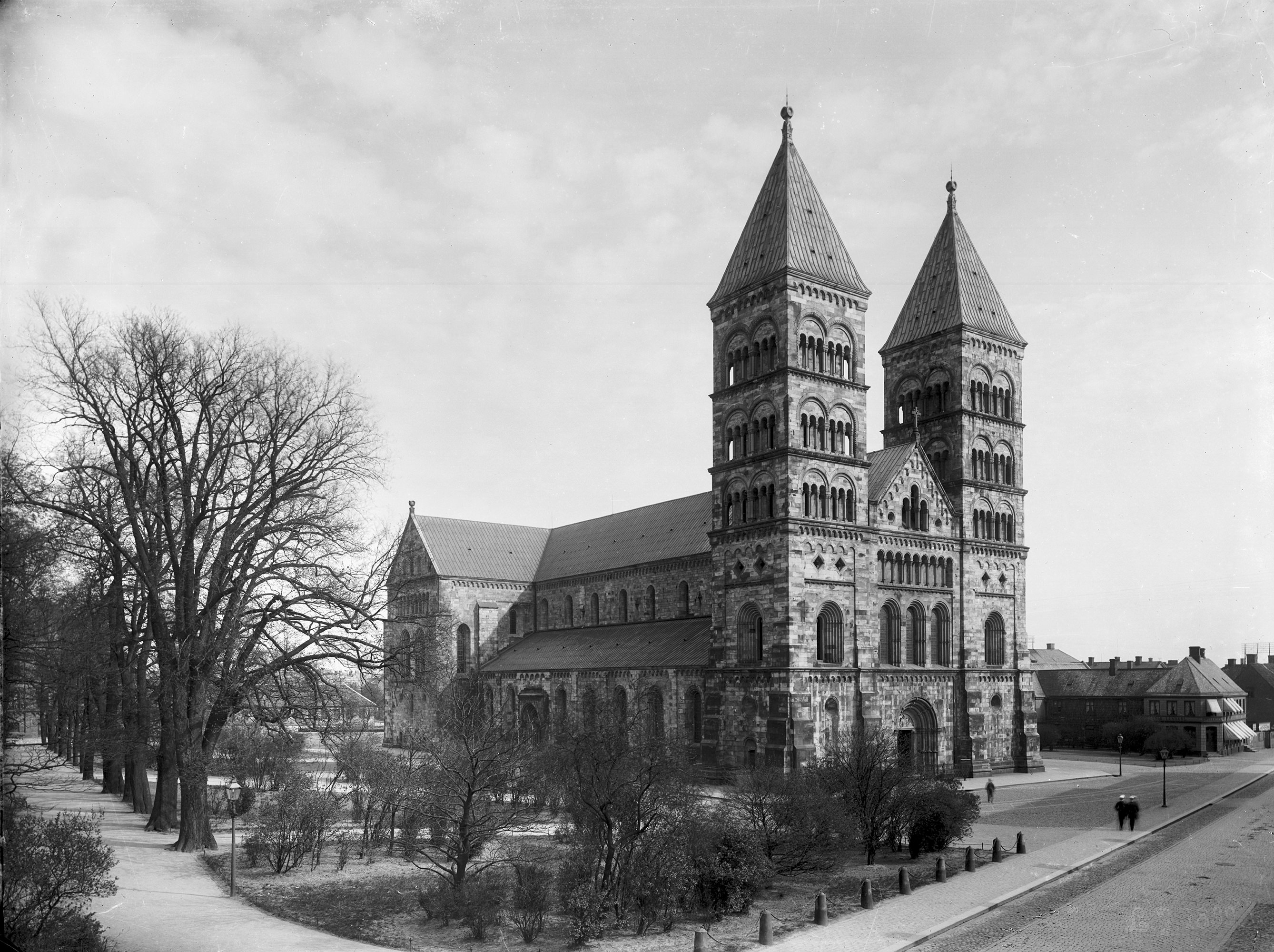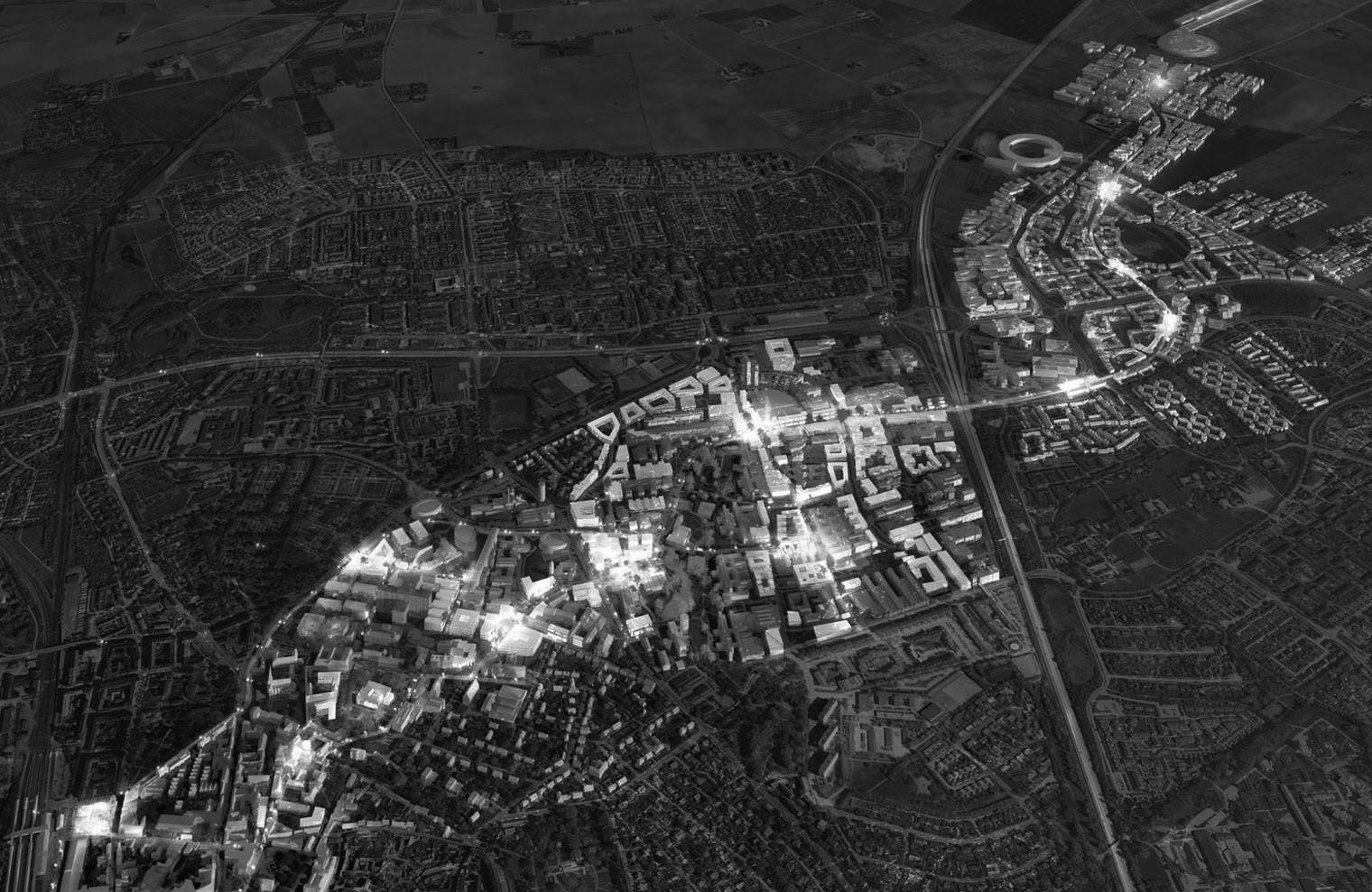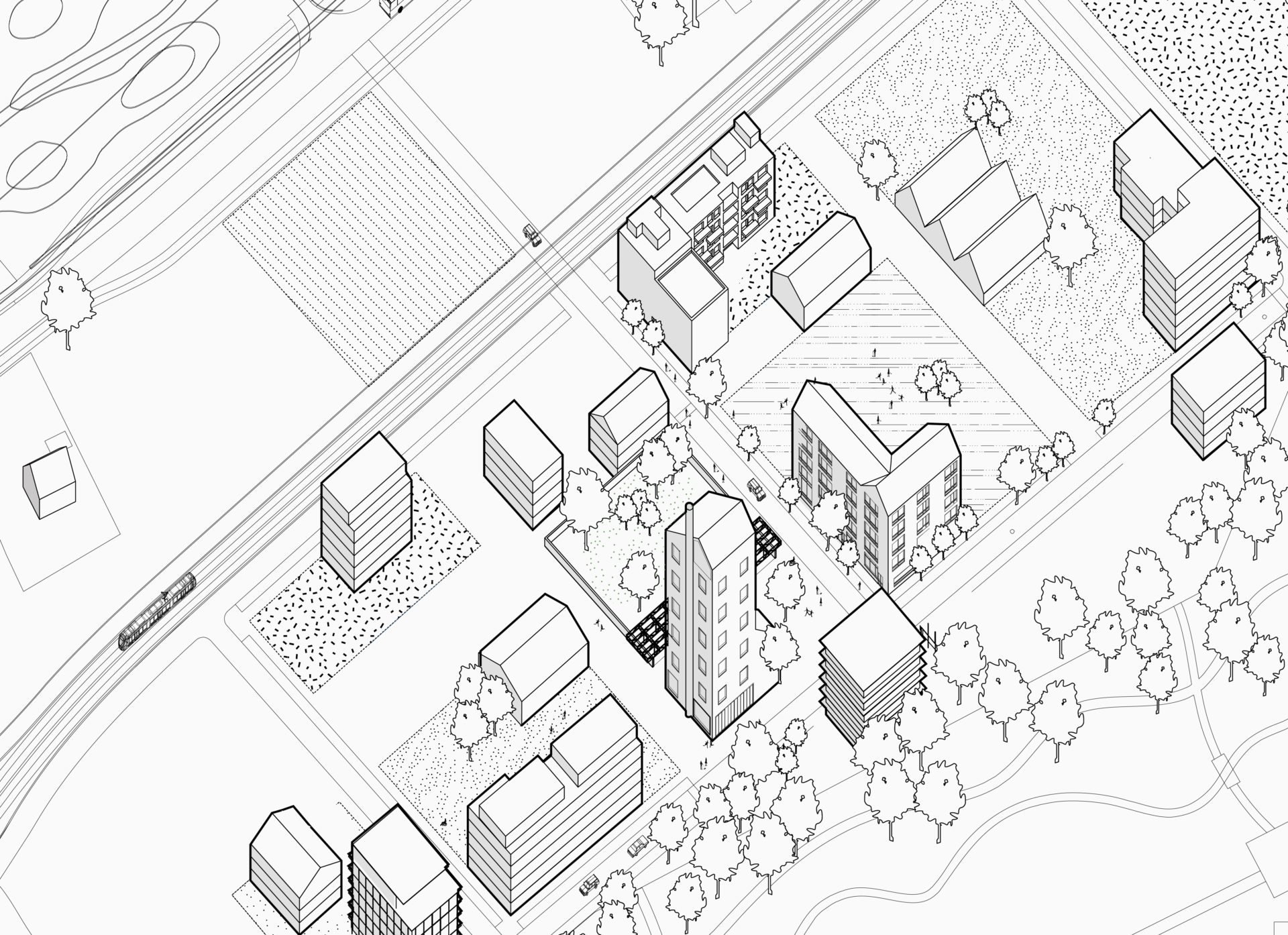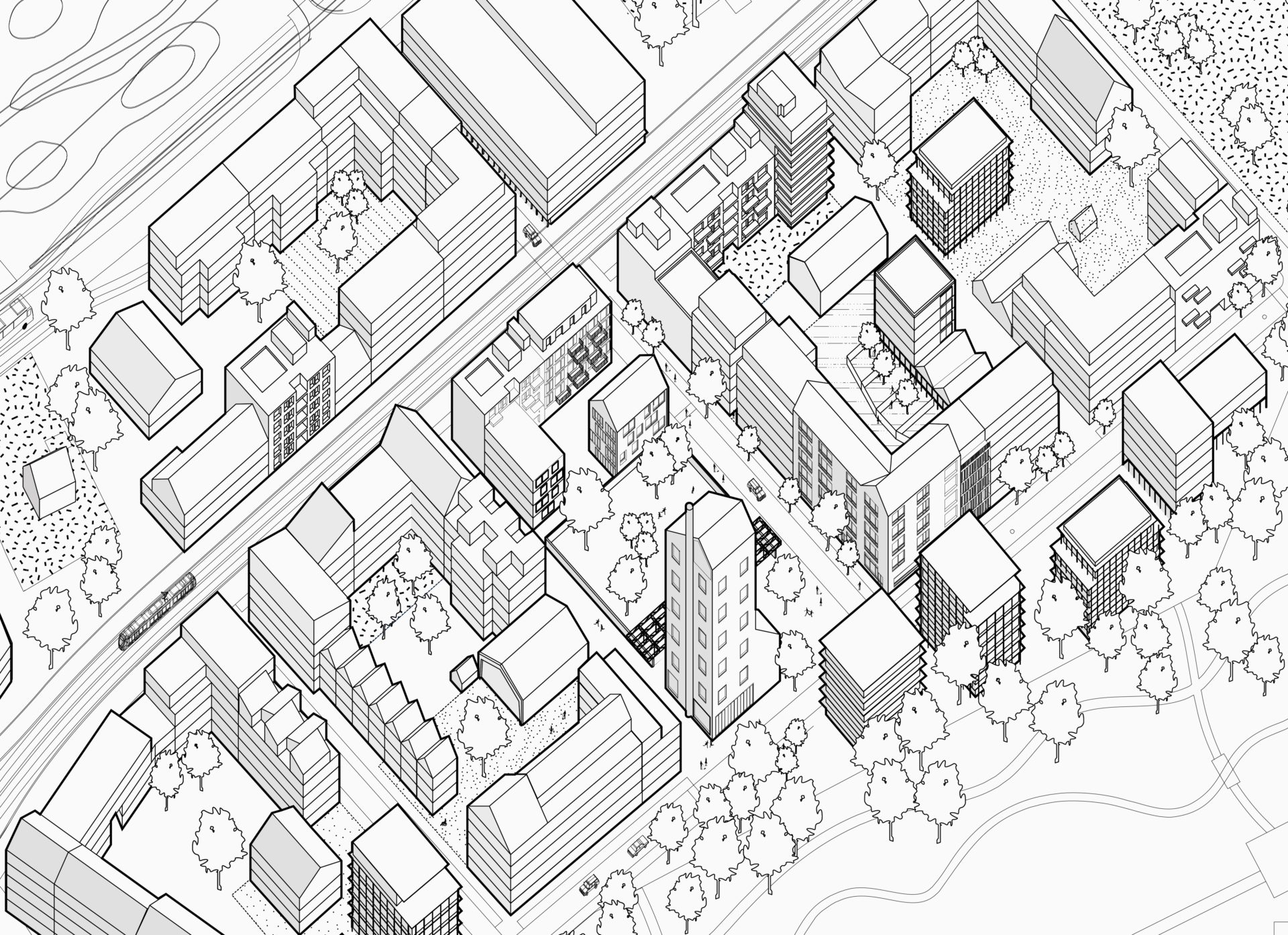Råängen
Råängen is both a development project and a platform for discussion about what happens on Lund Cathedral’s land in Brunnshög, an area on the north-east edge of Lund, in southern Sweden. The city’s expansion will significantly change the character of the area and include new housing, research facilities and parks, all built on what was, until recently, farmland.
Lund Cathedral has allocated ten hectares of the land it owns in Brunnshög to the development of a new neighbourhood. We have created a programme of discussions and commissions as a tool for conversation, critical debate and engagement to explore the ways that new parts of cities are built. The programme will inform the long-term development of the Cathedral’s land and result in a neighbourhood that delivers opportunities for new ways of living, working, and studying in the 21st century.
Råängen (which translates as ‘raw meadow’) is developing a narrative that builds on the involvement of artists, architects, local people, developers, contractors, and university staff, creating the groundwork for future stories in a new neighbourhood. It will provide a framework for discussion about the fundamental issues at stake in the overall development of Brunnshög: value systems, belief, ownership, fear, faith, time, beauty, commitment and endeavour.
Starting with temporary installations by British artist Nathan Coley in the centre of Lund and Brunnshög in 2017 and ’18, the programme of commissions continued with a public garden designed by Norwegian architects Brendeland & Kristoffersen which opened in 2021. The first buildings, designed by architects Flores & Prats, are due to be completed in 2025. Our programme includes a wide-ranging series of public events, talks, walks, school workshops, and films – all designed to create opportunities for debate, participation and critical analysis. Further down the line, there is potential for artists to be invited to carry out residencies and permanent commissions in the public realm.
The Råängen project is funded by the Cathedral board rather than the members church fee.
Lund Cathedral

This is the first time in recent history that the Cathedral has chosen to play a key role in the development of its own land. The project aims to invest as much commitment and care as our predecessors have employed over the last 900 years and ensure that the values and experiences of the Cathedral are integrated into the project in a way that respects this historic context while embracing the future. The development will address 21st century challenges and facilitate community enterprise to help create a neighbourhood that is able to meet people’s needs for the next 1,000 years.
There are a number of specific challenges which the Cathedral and wider project group wish to investigate:
How can a neighbourhood balance the wellbeing of both people and nature?
How can the public realm impart a sense of pride, ownership and appreciation of beauty?
How can the notion of hospitality, one of the key principles of the Cathedral, be integrated within Råängen?
Can a planning process express the radical idea from the Eucharist – one bread and one humanity?
Can a programme of events, talks and critical design projects provide an enriching context where culture, scientific research, local interests and academia overlap?
Development Context

Råängen is part of a larger development programme led by Lund Municipality in partnership with Lund University, Skåne Region and Lund Cathedral. The 450-hectare area is expected to accommodate 6,000 new homes, 600,000sqm of workspace, a new park and world class research centres by 2050. The project will significantly increase Lund’s housing and workplace infrastructure.
White Arkitekter is leading the Church’s development programme, establishing a strategic framework that began in 2020 and which will extend over the next thirty years. The practice is developing a responsive, long-term approach that focuses on the quality and characteristics of the land which, in turn, informs an approach to building, models of ownership and ways of living. Innovative architectural projects will be developed over time, delivered by many different actors, each one taking its cue from previous projects, responding to the context and needs of local people and the developing community.
Each phase of the development will relate to Lund Municipality’s masterplan, but we will develop our own distinctive character, focusing on issues relating to value, context, community, ecology and public provision, working with artists throughout the process. We are interested in posing questions as well as formulating answers. As Lena Sjostrand, Chaplain, Lund Cathedral, has said, in carrying out this project, we are looking to “make stories and ask questions”.
Visit

Råängen is 5 km north east of Lund city centre. It is located close to Utmarksvägen in Brunnshög.
Tram: Take the tram from Lund train station to MAX IV.
Bike: Cycle routes from Lund city centre run along Odarslövägen.
Car: Parking is available on site.
Who we are
Råängen has been initiated by Lund Cathedral’s board and is the first stage of a long-term development project in Brunnshög, Lund. Mats Persson (Treasurer, Lund Cathedral) and Lena Sjöstrand (Chaplain, Lund Cathedral) are Co-Directors of Råängen.
Project Group
We have formed a Project Group made up of representatives from the Cathedral, White Arkitekter, and the curator working on the project. This group is responsible for the delivery of the built project and programme.
Advisory Group
The Advisory Group is made up of art and architecture specialists based in Lund, Malmo, and Stockholm. The group advises, guides and challenges members of the Project Group on programming and strategy.
Consultants
A growing number of consultants and fabricators are working with the Cathedral to deliver the first projects and develop strategies for the future phases of the project: Aurora, Edge, Hilson Moran, Price & Myers Engineers, Proswede, Trivector
Project Group members
ÅSA BJERNDELL
Architect,
White Arkitekter
JES FERNIE
Independent curator
JAKE FORD
Landscape Architect,
White Arkitekter
CHRISTER LARSSON
Chairman,
Economic Committee,
Lund Cathedral
MATS PERSSON
Treasurer,
Lund Cathedral
LENA SJÖSTRAND
Chaplain,
Lund Cathedral
Advisory Group members
PATRICK AMSELLEM
Director,
Statens konstråd, Stockholm
JONATAN HABIB ENGQVIST
Independent curator,
Stockholm
MARIA LANTZ
Artist and Vice-Chancellor,
Konstfack, Stockholm
KIERAN LONG
Director, ArkDes,
Stockholm
ÅSA NACKING
Director,
Lunds Konsthall, Lund
LISA ROSENDAHL
Independent curator,
Berlin
CHRISTIAN SKOVBJERG JENSEN
Director, Inter Arts Centre,
Lund University, Malmo




